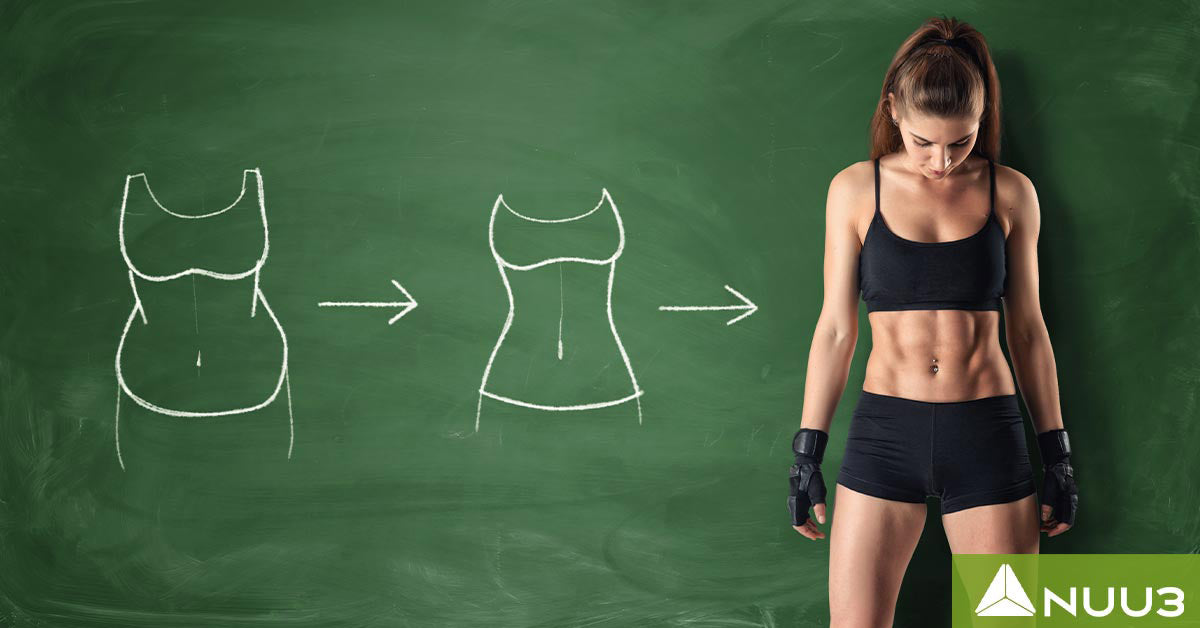Muscle Weight vs Fat Weight: What’s the Difference?

Introduction
Muscle weight and fat weight are often misunderstood when it comes to body composition and fitness. While the scale might show the same number, the way muscle and fat affect your body is vastly different. Muscle is denser and more compact, taking up less space than fat, which is bulkier. Understanding the differences between muscle and fat weight is key to achieving a healthier, more toned body, and can help shift the focus from simply losing pounds to improving overall body composition and fitness.
What is Muscle Weight?
Muscle weight refers to the mass of the muscles in your body, which are made up of protein, water, and glycogen. Muscle tissue is denser and more compact than fat, meaning it takes up less space for the same amount of weight. Muscles play a critical role in physical movement, strength, and overall metabolic function. Since muscle burns more calories at rest compared to fat, having more muscle mass can boost your metabolism and contribute to a leaner, more toned appearance. Increasing muscle weight through exercise, especially resistance training, can improve both strength and body composition.
What is Fat Weight?
Fat weight refers to the mass of fat stored in the body. Fat is an essential part of our biology, playing a crucial role in energy storage, hormone production, and protecting internal organs. However, not all fat is the same, and the way it is stored in the body can have different effects on health.
Types of Fat: Subcutaneous vs. Visceral
1.Subcutaneous Fat:
-
This is the fat stored just beneath the skin. It’s the more visible type of fat, typically found around areas like the belly, thighs, and arms.
-
Subcutaneous fat acts as an energy reserve, helps insulate the body, and provides cushioning for the skin and muscles.
2. Visceral Fat:
-
This type of fat is stored deeper in the body, around vital organs like the liver, heart, and intestines.
-
Visceral fat is less visible but more dangerous. It is associated with health risks like heart disease, diabetes, and inflammation.
3. Fat's Role in the Body
-
Energy Storage: Fat serves as a major energy reserve, providing fuel when needed, especially during periods of calorie deficiency.
-
Hormone Regulation: It plays a role in regulating hormones, including those related to metabolism and reproductive health.
-
Protection & Insulation: Fat protects internal organs from physical damage and helps regulate body temperature by insulating the body.
4. Fat Density and Volume
-
Fat is less dense than muscle, meaning it takes up more space for the same amount of weight. This is why someone with a higher fat percentage might appear larger, even if they weigh the same as someone with more muscle.
-
In terms of volume, fat is bulkier and softer compared to muscle, contributing to a less toned appearance when fat levels are higher.
Muscle vs. Fat: Key Differences
Understanding the differences between muscle and fat is essential, especially when addressing concerns like belly fat. Here are the key distinctions between the two:
1. Density and Volume
Muscle is much denser than fat, meaning it takes up less space for the same weight. This is why someone with more muscle can appear leaner, even if they weigh the same as someone with more body fat.
Fat, including belly fat, is bulkier and occupies more volume. As a result, fat can make the body appear softer and less toned, particularly in areas like the abdomen.
2. Metabolic Activity
Muscle is more metabolically active than fat, meaning it burns more calories even at rest. The more muscle mass you have, the higher your resting metabolic rate, which can help with weight control and fat loss.
Fat, especially belly fat, is less metabolically active and does not burn as many calories. Excess belly fat, particularly visceral fat, can slow metabolism and contribute to health risks like heart disease and diabetes.
3. Impact on Appearance
Muscle gives the body a more toned and firm appearance. Building muscle can reduce the visibility of fat and help shape the body, making it appear more defined.
Fat, particularly in the abdominal area, can lead to a softer, less defined look. Belly fat tends to be stubborn and can often be a focus of weight loss efforts due to its impact on both aesthetics and health.
4. Health Implications
Muscle is beneficial for overall health. It improves strength, supports joint health, and increases mobility. More muscle mass also helps prevent age-related muscle loss and reduces the risk of injury.
Fat, particularly visceral belly fat, is linked to serious health concerns. Excess visceral fat increases the risk of metabolic disorders, cardiovascular disease, and other chronic conditions.
Fat Loss vs. Weight Loss
Losing fat, especially belly fat, improves health and enhances body composition while preserving muscle can maintain strength and improve fitness.
Focusing solely on weight loss may lead to the loss of both fat and muscle, which can slow down metabolism and result in a less favorable body composition. To support a healthy weight management strategy, incorporating supplements like NUU3 ACV Gummies can be beneficial. These gummies are designed to aid fat metabolism, helping to reduce excess fat, including stubborn belly fat, while preserving muscle mass. By combining muscle-building exercises with targeted fat-loss strategies and supplements like NUU3 ACV Gummies, you can achieve better long-term results for both your health and body composition.
The Impact on the Scale
The number on the scale can be misleading when it comes to understanding your true progress in terms of body composition. Here are key points about how the scale may not tell the full story:
1. Muscle vs. Fat
Muscle is denser than fat, meaning it takes up less space in the body. As a result, even if you’re losing fat and gaining muscle, your weight on the scale might not change or could even increase. However, this doesn’t mean you're not progressing—your body may be getting leaner and more toned despite the number on the scale staying the same.
2. Water Retention and Fluctuations
Body weight fluctuates throughout the day due to water retention, digestion, and other factors. Temporary increases or decreases in weight can result from hydration levels, salty foods, or hormonal changes, which don’t reflect fat loss or muscle gain.
3. Fat Loss Doesn’t Always Mean Weight Loss
You can lose fat and still maintain or even gain weight if you’re building muscle at the same time. For example, losing belly fat while adding muscle in other areas will result in a healthier, more toned body, but the scale might not show a significant drop.
4. The Importance of Body Composition
Instead of focusing solely on the scale, measuring body composition—such as the ratio of fat to muscle—is a more accurate way to track progress. This gives a clearer picture of your overall fitness and health.
Benefits of Building Muscle
Building muscle goes beyond aesthetics and provides a wide range of health and fitness advantages. Here are the key benefits of increasing muscle mass:
Boosts Metabolism
Muscle is more metabolically active than fat, meaning it burns more calories even at rest. Increasing muscle mass helps raise your resting metabolic rate, which aids in weight management and fat loss. This can be particularly helpful in reducing stubborn areas like belly fat.
Improves Strength and Physical Performance
With more muscle comes increased strength, making everyday tasks easier and enhancing your physical performance in activities like sports, weightlifting, or cardio. Stronger muscles also support better posture and balance, reducing the risk of injury.
Enhances Body Composition
Building muscle helps shape and tone your body, giving it a leaner, more defined appearance. Even if your weight on the scale doesn’t change, replacing fat with muscle can drastically improve how your body looks and feels.
Supports Joint Health and Injury Prevention
Strong muscles provide better support for your joints, helping to prevent injuries, especially as you age. Muscular strength also aids in rehabilitation and recovery from physical injuries, reducing the stress placed on bones and ligaments.
Improves Long-term Health
Muscle mass plays a key role in preventing age-related muscle loss, known as sarcopenia, which can affect mobility and quality of life. Building and maintaining muscle helps combat this decline, keeping you more active and independent as you age.
Enhances Insulin Sensitivity
More muscle improves your body’s ability to regulate blood sugar levels by enhancing insulin sensitivity. This can help lower the risk of developing type 2 diabetes and improve overall metabolic health.
Boosts Confidence and Mental Health
The physical benefits of building muscle often result in greater confidence and a more positive self-image. In addition to improving your appearance, strength training can boost mental well-being by reducing stress, anxiety, and depression through the release of endorphins. For even greater support in managing stress, supplements like NUU3 Keep Calm Gummies can be a helpful addition to your routine. These gummies are designed to promote relaxation and enhance mental clarity, making it easier to stay calm and focused while pursuing your fitness goals. Combining muscle-building workouts with NUU3 Keep Calm Gummies can lead to both physical and mental wellness.
How to Measure Progress: Muscle vs. Fat
Tracking progress in your fitness journey goes beyond just stepping on the scale. To get a clearer picture of how your body is changing, it’s important to measure both muscle and fat changes through various methods. Here’s how to effectively measure your progress:
Body Composition Analysis
-
Bioelectrical Impedance Scales: These scales send a small electrical current through the body to estimate the percentage of body fat and muscle mass. While convenient, they can sometimes be affected by hydration levels.
-
Skinfold Calipers: These measure the thickness of skinfolds at various points on the body, helping estimate body fat percentage. It requires a trained professional for accurate results.
-
DEXA Scans: Dual-Energy X-ray Absorptiometry (DEXA) scans offer one of the most accurate ways to measure body composition, showing detailed information about fat, muscle, and even bone density.
Progress Photos
Taking regular progress photos is a great way to visually track changes in body composition. Muscle gain and fat loss might not always show up on the scale, but you’ll likely notice a leaner, more defined appearance in photos. Take these pictures under the same lighting and conditions every few weeks to see changes over time.
Measurements
Using a tape measure to track key areas of your body can give insights into muscle gain and fat loss. Common areas to measure include the waist, hips, chest, arms, and thighs. For instance, losing inches around the waist typically indicates fat loss, while increasing muscle mass can lead to gains in areas like the arms and legs.
Strength and Performance Gains
Tracking improvements in strength and endurance is a great indicator of muscle growth. Keeping a workout log to track how much weight you can lift, how many repetitions you can do, or how fast you can complete a cardio routine provides clear, tangible signs of progress.
How Clothes Fit
Another simple way to gauge progress is by paying attention to how your clothes fit. As you build muscle and lose fat, you might find your clothes fitting looser in areas where fat was lost (like the waist) and tighter in places where muscle was gained (like the arms and legs).
The Scale (With Caution)
While the scale can provide some insight into weight changes, it’s important to remember that it doesn’t differentiate between muscle and fat. Gaining muscle while losing fat may not cause a significant drop in weight, but your overall body composition and health will be improving.
Frequently asked questions
Can muscle turn into fat if you stop exercising?
No, muscle cannot turn into fat. However, if you stop exercising, muscle mass may decrease, and fat can accumulate if calorie intake exceeds energy expenditure.
Is it possible to gain muscle and lose fat simultaneously?
Yes, it's possible, especially for beginners or those returning to exercise. This process is called body recomposition, where muscle is built while fat is lost.
How long does it take to see a noticeable change in muscle vs. fat composition?
Typically, noticeable changes in body composition take around 4-12 weeks, depending on factors like workout consistency, diet, and individual metabolism.
In conclusion, understanding the differences between muscle and fat is key to achieving a healthier body composition. Focusing on building muscle not only improves strength and appearance but also boosts metabolism and enhances long-term health. By using various methods to track progress, rather than relying solely on the scale, you can stay motivated and achieve lasting results in both muscle gain and fat loss.












